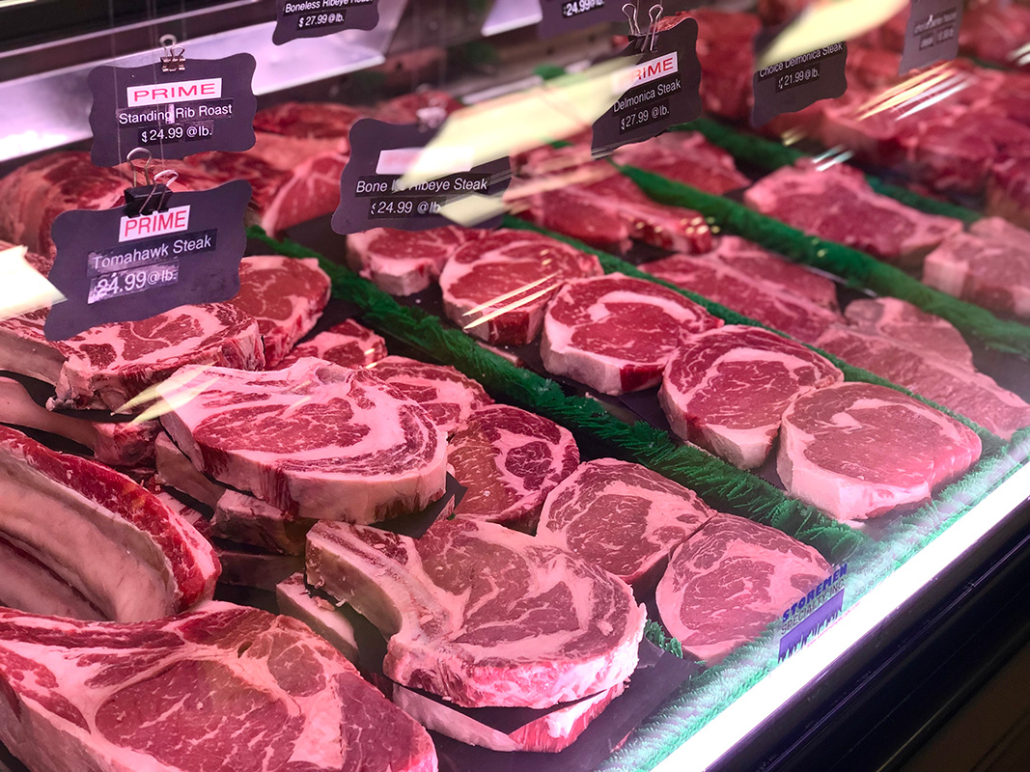Why Residents Love Bagley Farms Meat Market Edwardsville IL for Their Meat Purchasing
Why Residents Love Bagley Farms Meat Market Edwardsville IL for Their Meat Purchasing
Blog Article
Discover the Art of the Butcher's Cut in a Modern Meat Market
In the ever-evolving landscape of modern-day meat markets, the butcher's cut has transcended its traditional roots, merging olden craftsmanship with contemporary practices. Today's butchers are not merely processors of meat; they are experienced artisans who emphasize sustainability and ethical sourcing. Their experience in choose and preparing cuts customized to particular culinary needs offers an unequaled dining experience. What genuinely establishes the contemporary butcher apart is their ability to create a deeper connection between customers and the origins of their meat. Exactly how do these masters balance tradition with innovation, and what effects does this have for the future of meat usage?
Advancement of Butchery Strategies
The advancement of butchery techniques shows a rich tapestry of technology and adaptation driven by developments in modern technology, changes in consumer need, and a deeper understanding of meat science. Historically, butchery was a craft passed down via generations, with approaches refined over centuries to optimize return and flavor. However, the industrial change introduced mechanization, changing typical practices and allowing large handling.
The mid-20th century saw butchery strategies further fine-tuned by scientific understandings right into muscular tissue biology and meat aging, enhancing both tenderness and taste. Advancements like vacuum cleaner product packaging and refrigeration expanded item shelf-life, allowing butchers to diversify offerings and enhance quality assurance. This duration also marked the rise of specialized devices, such as band saws and meat slicers, which raised precision and efficiency in meat handling.

The 21st century has introduced electronic innovation right into the butchery world. Computerized systems now help in monitoring pet provenance and optimizing cuts to meet certain client choices. Additionally, a resurgence in artisanal butchery has actually arised, mixing traditional skills with modern knowledge to cater to consumers seeking ethical and sustainable meat options. This evolution underscores a dynamic interplay between tradition and technology, conference modern needs while protecting the craft's heritage.
Recognizing Meat Cuts
Recognizing the complexities of meat cuts is necessary for both butchers and consumers seeking high quality and worth. For butchers, precise cuts show ability and regard for the craft, ensuring minimal waste and ideal return.

Understanding muscle make-up is vital; muscle mass utilized more regularly by the pet have a tendency to be harder her latest blog and are best fit for slow cooking approaches, while less-used muscle mass, like those discovered in the loin, are much more tender and ideal for grilling or roasting. Experience with these distinctions empowers customers to make educated choices, boosting their my website culinary endeavors.
Picking High Quality Meat
Picking the right meat includes even more than simply selecting a visually attractive item from the display screen. The art of picking quality meat needs a critical eye and understanding of details features that signify freshness and excellence.
Secondly, think about the marbling, which describes the white streaks of fat within the muscular tissue. Correct marbling is a key indicator of tenderness and flavor, as it melts during cooking, improving the meat's juiciness. Keep in mind, greater marbling usually associates with exceptional top quality cuts, such as USDA Prime.
Texture is another crucial element; meat ought to feel solid to the touch, not slimy or excessively soft. Furthermore, be conscious of the fragrance. Fresh meat ought to have a clean, neutral odor, without any type of sour or repulsive odors.
Combining Cuts With Food Preparation Techniques

Alternatively, tougher cuts like brisket and chuck roast are abundant in collagen, which breaks down right into gelatin when cooked slowly. These cuts are suitable for braising or slow roasting, permitting the meat to tenderize with time and establish deep, complicated tastes. In a similar way, cuts such as short ribs and pork shoulder prosper with slow-cooking approaches, where extended cooking times transform their durable structures right into succulent meals.
Lamb shanks and oxtail, which call for long term cooking to tenderize, are perfect prospects for cooking or slow simmering. These approaches coax out abundant, passionate tastes while keeping dampness. By recognizing the unique characteristics of each cut, chefs and home cooks alike can boost their culinary productions, ensuring each recipe is both satisfying and remarkable.
The Butcher's Function Today
Navigating the developing landscape of the modern-day meat market, the butcher's function today expands beyond simple prep work of cuts. Contemporary butchers are culinary craftsmens, educators, and advocates for lasting practices.
In enhancement to crafting precise cuts, butchers now involve directly with clients, supplying cooking guidance and customizing options to suit private demands and preferences. Their expertise in meat aging, marbling, and flavor accounts equips customers to make enlightened decisions, visit this website improving their cooking experiences. This individualized solution exemplifies the butcher's developing duty as a trusted expert in the kitchen.
Additionally, butchers are crucial in reducing waste, making use of entire animals to create varied items such as sausages and supplies. This comprehensive technique not only appreciates the pet yet likewise straightens with contemporary sustainability objectives. In this method, the modern-day butcher embodies both custom and advancement, adapting to an ever-changing market while maintaining the creativity and stability of their craft.
Conclusion
The contemporary butcher's craft elaborately weaves traditional methods with modern-day developments, stressing lasting techniques and ethical sourcing. Mastery in understanding diverse meat cuts and quality indications encourages butchers to give enlightened referrals, lining up certain cuts with ideal cooking methods. This competence not only elevates cooking experiences yet additionally strengthens the link between consumers and the beginnings of their food. By recognizing historic practices while embracing modern demands, the butcher's role continues to be vital in today's sophisticated meat market (bagley farms meat market edwardsville il).
Report this page